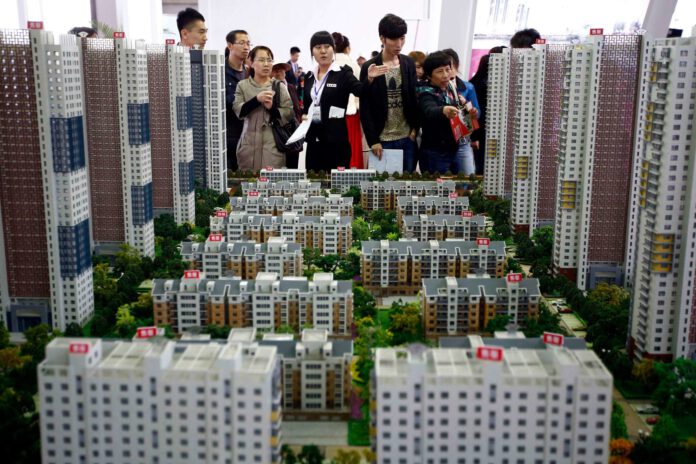
As China approaches its 76th anniversary and the final stretch of the 14th Five-Year Plan, key questions are resurfacing: How should we assess the country’s economic performance over the past five years? What direction will the property and stock markets take? And how should individuals plan their finances amid persistently low interest rates?
Professor Zhu Ning Finance at the Shanghai Advanced Institute of Finance (SAIF) at Shanghai Jiao Tong University has long warned of risks in China’s real estate sector and broader macroeconomy—insights that earned his book Rigid Bubbles the prestigious Sun Yefang Award. At the same time, his work on investor behaviour sheds light on the deeper structural issues in China’s capital markets.
In a recent conversation, Professor Zhu reflected on the past five years and shared his thoughts on two growing challenges: the future of housing as an asset class, and the need for more rational investor behaviour in a long-term bull market.
As China marks its 76th anniversary and approaches the end of the 14th Five-Year Plan, how would you assess the country’s economic progress over the past five years, particularly in the financial and property sectors?
There are three areas of notable progress.
First is the shift from a property- and debt-driven model toward innovation-led, high-quality growth. This transformation is difficult but essential, and we’ve made solid progress.
Second, China’s role in global supply chains has grown stronger. Despite external pressures, our integrated manufacturing system has proven resilient and indispensable in areas from pharmaceuticals to daily goods.
Third, financial and property sector risks are being gradually resolved. Property prices are no longer seen as guaranteed to rise, and the economy is learning to rely more on productivity and market strength rather than real estate and infrastructure.
Overall, while growth has slowed, it reflects necessary adjustments. Managing risk always comes with costs, but this transition is crucial for long-term stability.
Has rigid redemption in China’s financial system truly been dismantled?
China has made important progress, but it’s not fully dismantled yet.
In the A-share market, rigid redemption is mostly gone—investors now understand the government won’t always step in. In areas like P2P lending, real estate, and trust products, implicit guarantees have weakened. But in local government and SOE debt, many still expect state backing. Without it, some issuers would struggle to raise funds or avoid default.
Going forward, markets should price risk based on a firm’s fundamentals—not on whether it’s state-owned or private. That’s the path meaningful financial reform must follow.
In many sectors involving state capital—like infrastructure or public services—private firms often lack interest. Without implicit guarantees, wouldn’t state-owned enterprises (SOEs) struggle to access financing?
That’s a valid concern, and it’s why we’ve seen a recent shift in how SOEs are classified—into strategic monopoly sectors and competitive market-oriented ones. For sectors like infrastructure and public goods, state involvement is necessary and expected. These can be viewed separately.
However, in more competitive fields—like civil aviation or transportation—we should encourage more private capital and genuine market competition. While SOEs bear important social responsibilities, their policy advantages can also hinder efficiency and responsiveness. It’s a double-edged sword.
The next stage of reform should aim to balance two things: leveraging the state’s capacity to support and guide SOEs, while also ensuring they operate with efficiency and accountability. Government support is fine, including credit enhancements—but it mustn’t foster complacency or moral hazard. If SOEs assume the state will always bail them out, discipline and initiative decline. The challenge is to retain the strengths of “state-owned” while integrating the dynamism and efficiency of private enterprise.
Considering recent trends in real estate and economic growth, would you say we have successfully achieved a soft landing for China’s property-driven economy?
Yes. When I wrote Rigid Bubbles in 2016, the main concern was preventing a property bubble burst that could harm the economy. At its peak in 2020–2021, real estate made up nearly one-fifth of China’s GDP, with related sectors accounting for about a third—an unusually high dependence.
Over the past five years, this model has been adjusted out of necessity. No asset price can rise forever, so we needed to prepare for a correction. The bubble’s deflation has allowed for a soft landing in property prices.
While the 2021 “three red lines” policy on developers could have been more flexible for a smoother transition, breaking the long-held belief that property prices only rise required a strong market correction.
In short, China has achieved a soft landing in the property sector without major damage to overall economic growth—a significant accomplishment. This is a truly remarkable achievement.
Many cities have eased purchase restrictions, yet the property market hasn’t rebounded. Are we swinging from a “prices only rise” mindset to the opposite extreme? How long will this adjustment last?
I expect the property market adjustment to last another 3 to 5 years. Historically, major property bubbles worldwide have taken about a decade to bottom out—Japan’s lasted 17 years, the US around 8. China’s peak was around 2016-2017, so recovery by 2026-2027 seems likely.
China’s bubble was especially extreme—property prices in some cities reached levels equivalent to 100 years of rent, far surpassing global norms. This suggests our correction could be longer and deeper than usual.
Regarding purchase restrictions, they’ve been mostly administrative tools to curb bubbles. Many local governments are easing these, but core areas like Beijing and Shanghai still enforce them. Fully lifting restrictions without stable prices could further hurt confidence.
At this stage, few short-term policies can stop the decline because both prices and rents have fallen, weakening real estate’s investment appeal. The market needs a gradual, “time-for-space” adjustment to realign prices with fundamentals.
“Made in China” is known worldwide, yet why has the stock market struggled? Despite strong economic growth and a renowned manufacturing sector, China’s stock market delivers relatively low returns for investors and plays a limited role in financing the real economy. What’s your take on this?
This is a complex issue rooted deeply in the nature of China’s capital markets, shaped by three main factors.
First, the focus has historically been on financing enterprises rather than on delivering strong investment returns. The stock market was initially designed to help state-owned enterprises restructure and grow, but little attention has been given to what investors actually gain. For the market to thrive, investor confidence and returns must improve, encouraging more long-term capital commitment.
Second, while rigid government guarantees have been removed, a paternalistic regulatory mindset persists—one that tries to shield investors from losses. This limits investor responsibility and market price discovery. True market development requires investors to learn from their mistakes, cultivating maturity through experience rather than protection.
Third, China’s market remains heavily retail-driven, with relatively little participation from institutional investors and long-term capital. Retail investors are prone to behavioural biases, causing volatility and limiting market stability. Expanding mature, patient capital is essential to anchor the market.
Finally, retail investors often lack understanding of the real economy and its relationship to the stock market, making investor education a crucial long-term challenge for China’s capital markets.
Source: Guancha, the new york times



